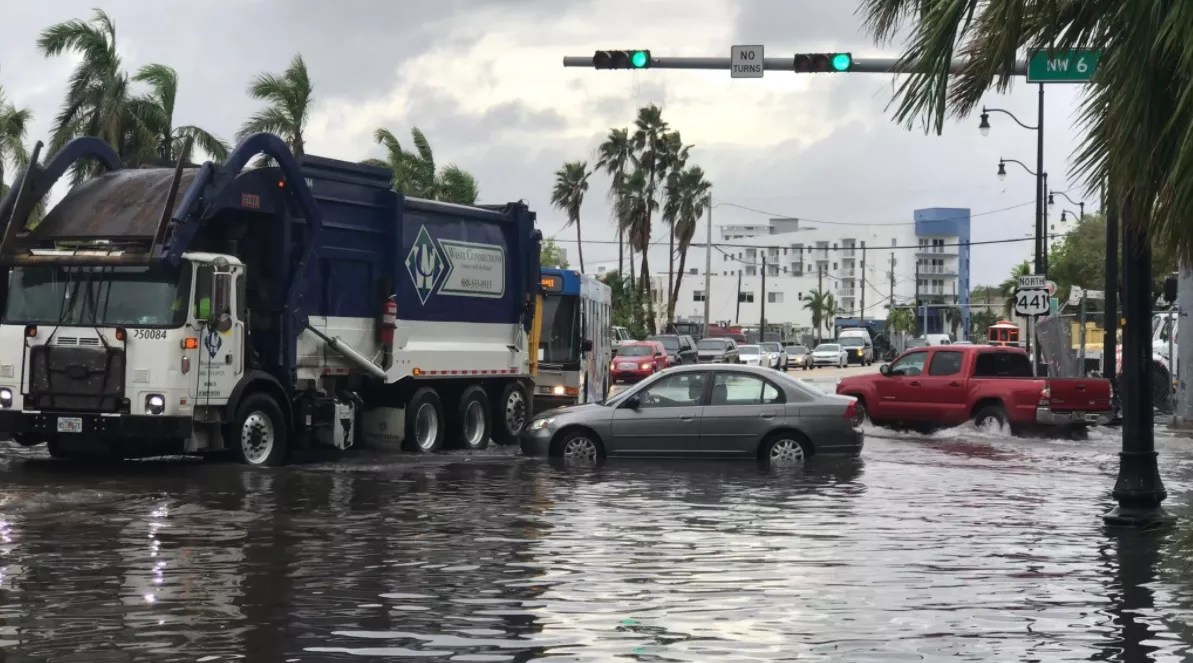
City of Miami

Audio By Carbonatix
If you’ve been delaying your visit to Miami’s Vizcaya Museum & Gardens, the Ernest Hemingway house in Key West, or the 18th-century Cathedral Basilica of St. Augustine, now is the time to make arrangements. The same goes for scientists: If you’re planning, say, a study of the indigenous civilizations that lived in the Everglades thousands of years before Europeans arrived, start digging tomorrow.
That’s because according to a new study published this week, Florida stands to lose nearly 6,000 archaeological and historic sites by 2100 if seas rise by just one meter. Scientists from the University of Tennessee, Indiana University, Northern Kentucky University, and others warn that only one meter of ocean rise could destroy 19,676 historic sites across the Southeast United States alone – and because Florida is the region’s flattest, lowest-lying, and most ocean-exposed state, it naturally stands to lose more irreplaceable areas than any other state.
Of the exposed areas in Florida that sit lower than one meter above sea level, 5,498 are listed as archeological areas. Another 438 are sites listed on the National Register of Historic Places.
“Many more unrecorded archaeological and historic sites will also be lost as large areas of the landscape are flooded,” researchers warn in the study, published in the academic journal PLOS One. “The displacement of millions of people due to rising seas will cause additional impacts where these populations resettle. Sea level rise will thus result in the loss of much of the record of human habitation of the coastal margin in the Southeast within the next one to two centuries, and the numbers indicate the magnitude of the impact on the archaeological record globally.”
Frighteningly, many respected scientific bodies have warned the nation to brace for even larger ocean surges. The National Oceanic and Atmospheric Administration, for example, warned last January that, though improbable, ten to 12 feet of ocean rise could happen by the end of this century.
In this week’s study, researchers warned that a five-meter ocean rise would destroy more than 34,000 archaeological sites and historic monuments in the Southeast alone. In Florida, the results would be dire: More than 10,000 sites sit below the five-meter mark in Florida.
If the nightmare ten-foot scenario occurs, roughly 14,000 sites would be submerged statewide.
Though depressingly little is being done at the state and federal levels to stop the ocean from swallowing Florida, the Atlantic‘s CityLab earlier this month profiled a team of Miami archaeologists working to protect South Florida’s historic sites from oblivion. Reporters followed county archaeologist Jeff Ranson and Sara Ayers-Rigsby, the southeast/southwest regional director of the Florida Public Archaeology Network, as the pair hunted for bones of creatures such as wolves, mastodons, camels, and sabertooth tigers that date from the Pleistocene era, as well as human fossils left by Tequesta Native Americans roughly 2,000 years ago.
“Some things will be lost forever,” Ayers-Rigsby warned CityLab.
The researchers at PLOS One not only agree but also went a step further this week and noted that human fixes for climate change might become so drastic they wind up destroying some sites.
“The impact of changing